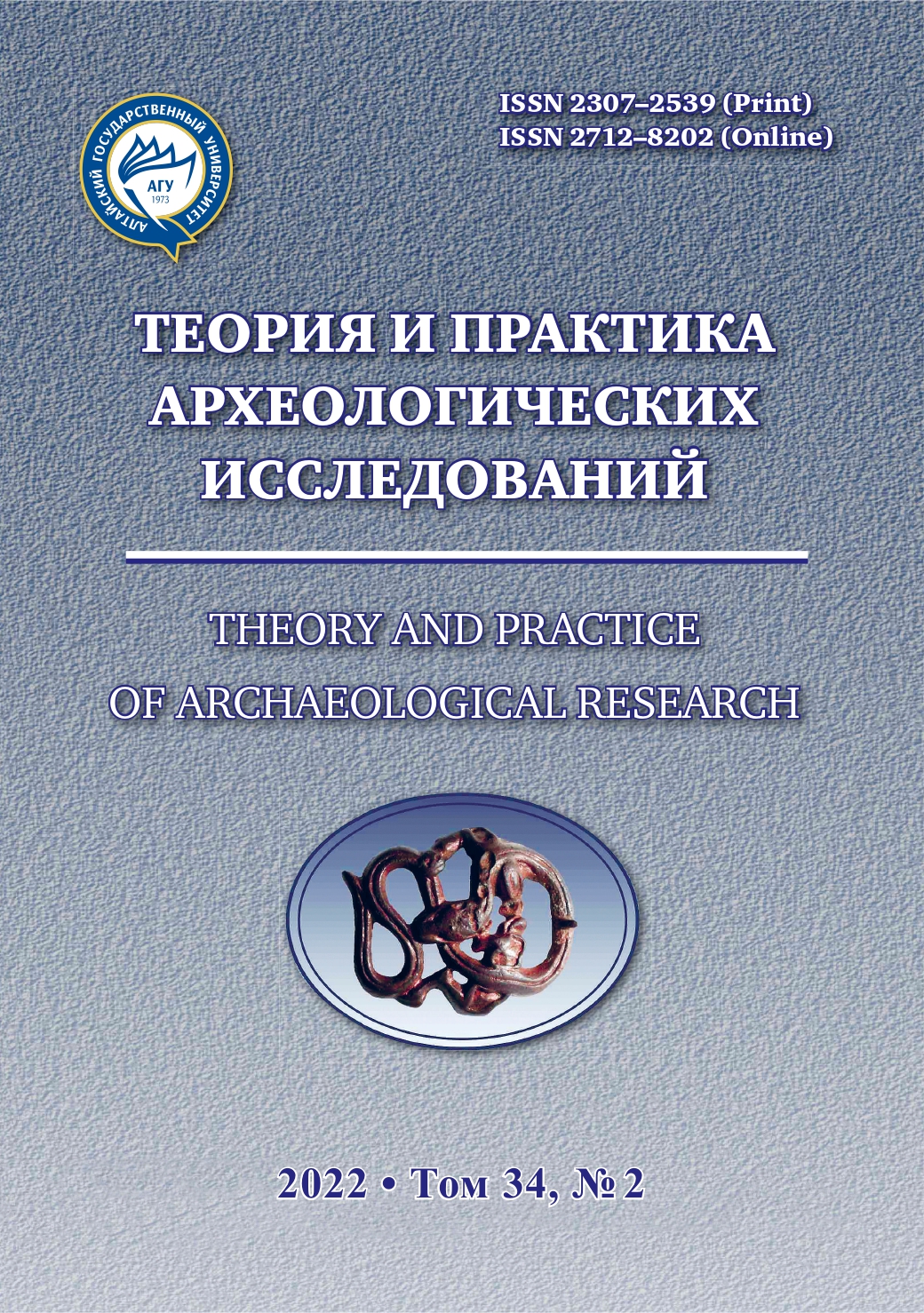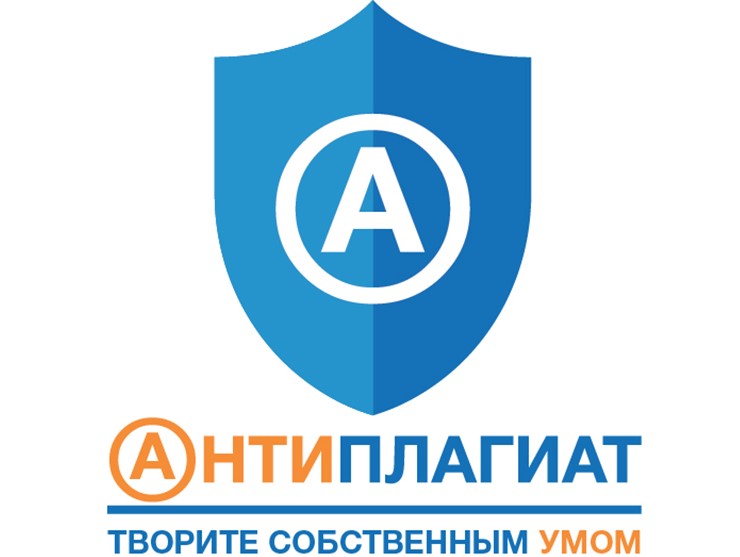НОВЫЕ СВЕДЕНИЯ О ЖЕЛЕЗНОМ ЧЕКАНЕ ИЗ НЕКРОПОЛЯ НОВОТРОИЦКОЕ-I
Аннотация
В статье рассматривается железный чекан из могильника Новотроицкое-I, хранящийся в фондах Историко-краеведческого музея Алтайского государственного педагогического университета. Оригинальное изделие считалось утраченным и в научной литературе известна лишь его первичная не совсем точная прорисовка, которая не раз привлекалась специалистами в различных исследованиях. Таким образом, неверные сведения о чекане постоянно дублировались. В 2021 г. в ходе работ в фондах музея чекан был обнаружен одним из авторов. Как выяснилось, чекан подвергся частичной реставрации, которая позволила выявить значимые морфологические особенности экземпляра. Целью настоящей статьи является повторная публикация изделия с учетом новых появившихся сведений, значительно уточняющих информацию о его конструкции. Одной из значимых особенностей чекана является ромбовидное расширение на окончании бойка, усиливающее его проникающие свойства, а также наличие таких дополнительных деталей, как вток и колпачок. Последние предохраняют древко от расщепления. Образцы с подобными характеристиками практически не известны на других территориях. Ближайшей аналогией является экземпляр из западного Тянь-Шаня, происходящий из сакского комплекса. В то же время чеканы подобного облика хорошо известны по материалам памятников, расположенных на территории Лесостепного Алтая. По всей вероятности, указанные характеристики являются местной традицией, что позволяет говорить о высоком уровне развития военного дела в данном регионе, поскольку указанные детали значительно повышают боевую эффективность оружия. Рассмотренный чекан из могильника Новотроицкий-I пополняет оригинальную серию изделий этого вида оружия, пользовавшегося популярностью у населения Лесостепного Алтая в скифское время.
Скачивания
Metrics
No metrics found.
Литература
Vedyanin S. D., Kungurov A. L. Soil Burial Ground of the Old Alei Culture Obskiye Plesy 2. In: Funeral Rite of the Ancient Tribes of Altai. Barnaul : Izdatel’stvo Alt. un-ta, 1996. Pp. 88–114. (In Russ.)
Gening V. F. Large Mounds of the Forest-Steppe Tobol Region. In: Nomads of the Ural-Kazakhstan steppes. Yekaterinburg : UIF “Nauka”, 1993. Pp. 72–101. (In Russ.)
Golovchenko N. N. “No Connection”: an Unbuttoned Belt in the Funeral Rites of the Population of the Upper Ob Region of the Early Iron Age. Narody i religii Evrazii = Peoples and religions of Eurasia. 2021;3(26):24–35. (In Russ.)
Golovchenko N. N. Two Belt Linings from the Burials of the Population of the Upper Ob Region of the Early Iron Age: Symbolism and Sacralization of Destruction. Universum Humanitarium. 2020; 2:18–35. (In Russ.)
Golovchenko N. N. Research and Some Issues of Interpretation of Textile Fragments from Barrow 15 of the Novotroitskoye-1 Necropolis. Vestnik arheologii, etnografii i antropologii = Bulletin of Arcaheology, Ethnography and Anthropology. 2018;2(41):61–68. (In Russ.)
Gorbunov V. V., Tishkin A. A. Armament Complex of the Nomads of the Altai Mountains of the Xiongnu Era. Arheologiya, etnografiya i antropologiya Evrazii = Archaeology, Ethnography and Anthropology of Eurasia. 2006;4 (28): 79–85. (In Russ.)
Gorelik M. V. Weapons of the Ancient East (4th millennium — 4th century BC). St. Petersburg : Atlant, 2003. 336 p. (In Russ.)
Grace A. D. Ancient Nomads at the Center of Asia. Moscow : Nauka, 1980. 256 p. (In Russ.)
Ivanov S. S. Battle Axes of the Saka Culture of the Tien Shan. Stratum plus. 2019;3: War and Feast in the Nomadic Steppe: 113–123. (In Russ.)
Ivanov S. S. Iron Battle hammer of the Saka Time from the Burial Ground of Dzhal-Aryk II (Ketmen-Tyube valley, Western Tien Shan). Vestnik Novosibirskogo gosudarstvennogo uni-
versiteta = Bulletin of the Novosibirsk State University. 2020;5(19):119–129. (In Russ.)
Kiryushin Yu. F., Kungurov A.L. Burial Ground of the Early Iron Age Staroaleika 2. In: Funeral Rite of the Ancient Tribes of Altai. Barnaul : Izdatel’stvo Alt. un-ta, 1996. Pp. 115–134. (In Russ.)
Klepikov V. M. Early Sarmatian Swords in the Lower Volga. In: Armament of the Sarmatians: Regional Typology and chronology. Chelyabinsk : Izd-vo Yuzhnoural`skogo un-ta, 2007. Рp. 51–57. (In Russ.)
Kocheev V. A. Combat Weapons of the Pazyryks. In: Antiquities of Altai. News of the Laboratory of Archaeology. Gorno-Altaisk : B.i., 1999. No. 4. Pp. 79–82. (In Russ.)
Kubarev V. D. Mounds of Sailyugem. Novosibirsk : Nauka, 1992. 220 p. (In Russ.)
Kubarev V. D. Mounds of Ulandryk. Novosibirsk : Nauka, 1987. 302 p. (In Russ.)
Kubarev V. D. Mounds of Yustyd. Novosibirsk : Nauka, 1991. 190 p. (In Russ.)
Kurochkin G. N. Rich Burial Mounds of the Scythian Nobility in the South of Siberia (Big Novoselovsky and Big Poltakovskiy mounds). In: Archaeological Research. Issue 7. St. Petersburg : Izd-vo IIMK RAN, 1992. 94 p. (In Russ.)
Kurochkin G. N., Subbotin A.V. Fighting battle hammer (calves) with the Head of a Bird of Prey between the Striker and the Sleeve in the Asian and European Parts of the Scythian World (on the problem of origin and distribution). In: Antique Civilization and the Barbarian World. Part II. Novocherkassk: Novocherkasskij muzej istorii donskogo kazachestva, 1993. Pp. 59–64. (In Russ.)
Litvinsky B. A. The Temple of Oxus in Bactria (Southern Tajikistan). Vol. 2. Bactrian Armament in the Ancient Eastern and Greek Context. Moscow : Vostochnaya literatura, 2001. 528 p. (In Russ.)
Likhacheva O. S. Armament and Military Affairs of the Population of the Forest-Steppe Altai in the Early Iron Age (the 8th — 1st centuries BC). Barnaul: IP Kolmogorov I.A., 2020. 304 p. (In Russ.)
Likhacheva O. S. Reconstruction of Warriors of the Kamensk Culture of the 4th–3rd Centuries BC. (Based on the materials of the Novotroitsk necropolis) In: Antiquities of Siberia and
Central Asia/ Vol. 8(20). Gorno-Altaisk: Gorno-Altajskij gosudarstvennyj universitet ; Nauchno-issledovatel`skij centr istorii i kul`tury tyurkskih narodov. 2017;. (In Russ.)
Likhacheva O. S. System Analysis of Battle hammer of the 6th — 1st Centuries. BC. (According to the materials of the sites of the Forest-Steppe Altai). In: War and Weapons. New Research and Materials. St. Petersburg : VIMAIViVS, 2013. Part III. Pp. 56–72. (In Russ.)
Melyukova A. I. Armament of the Scythians. Moscow : Nauka, 1964. 64 p. (In Russ.)
Mogilnikov V. A. Sargat Culture. In: Archaeology of the USSR. T. 11: The Steppe Zone of the Asian Part of the USSR in the Scythian-Sarmatian Time. Moscow : Nauka, 1992. Pp. 292–311. (In Russ.)
Mogilnikov V. A. The Population of the Upper Ob Region in the Middle — the Second Half of the 1st Millennium BC. Moscow: B.i., 1997. 195 p. (In Russ.)
Mogilnikov V. A., Umansky A.P. Novotroitskoye-I, Mound 15 and the Chronology of Some Categories of Things in Southern Siberia in the Middle - Third Quarter of the 1st Millennium BC. In: Questions of Archaeology and History of Southern Siberia. Barnaul: BGPU, 1999. Pp. 91–100. (In Russ.)
Neverov S. V., Likhacheva O. S., Weapons from the Novotroitskoye-I Burial Ground (Materials of the Excavations in 1977). In: Preservation and Study of the Cultural Heritage of the Altai Territory. Barnaul : AZBUKA, 2013. Issue. XVIII–XIX. pp. 215–219. (In Russ.)
Ovsyannikov V. V., Saveliev N. S. Military Sanctuary on the Akberda II Settlement. Arheologiya Evrazijskih stepej = Archaeologists of the Eurasian steppes. 2019;2: 201–226. (In Russ.)
Polosmak N. V. “Vultures Guarding Gold” (Ak-Alakha burial mounds). Novosibirsk : B.i.,1994. 125 p. (In Russ.)
Rudenko S. I. Culture of the Population of Gorny Altai in the Scythian time. Moscow ; Leningrad : Nauka, 1953. 402 p. (In Russ.)
Surazakov A. S. Gorny Altai and its Northern Foothills in the Early Iron Age. In: Problems of Chronology and Cultural Differentiation. Gorno-Altaisk : Gorno-Altajskoe otdelenie Altajskogo knizhnogo izdatel`stva, 1988. 216 p. (In Russ.)
Troitskaya T. N., Borodovsky A. P. Bolsherechenskaya culture of the forest-steppe Ob region. Novosibirsk: Nauka, 1994. 184 p. (In Russ.)
Umansky A. P., Shulga P. I., Preliminary Results of the Study of Weapons from the Novotroitsk Necropolis. In: Theory and Practice of Archaeological Research. Barnaul : Izdatel’stvo Alt. un-ta, 2005. Issue. 1. Pp. 121–132. (In Russ.)
Chugunov K. V. Arzhan. Source in the Valley of the Kings. In: Archaeological Discoveries in Tuva. St. Petersburg : Slavia, 2004. Рp. 10–37. (In Russ.)
Chugunov K. V., Parzinger G., Nagler A. The Royal Barrow of the Scythian time Arzhan-2 in Tuva. Novosibirsk : Izdatel’stvo IAET SO RAN, 2017. 500 p. (In Russ.)
Shulga P. I. Armament in Altai in the 6th — 3rd Centuries. BC. In: Armament of the Sarmatians: Regional Typology and Chronology. Chelyabinsk : Izdatel’stvo YuUrGU, 2007. Pp. 142–156. (In Russ.)
Shulga P. I., Umansky A. P., Mogilnikov V. A. Novotroitsk Necropolis. Barnaul: Izdatel’st-vo Alt. un-ta, 2009. 329 p. (In Russ.)
Авторы, публикующиеся в данном журнале, соглашаются со следующими условиями:
a. Авторы сохраняют за собой права на авторство своей работы и предоставляют журналу право первой публикации этой работы с правом после публикации распространять работу на условиях лицензии Creative Commons Attribution License, которая позволяет другим лицам свободно распространять опубликованную работу с обязательной ссылокой на авторов оригинальной работы и оригинальную публикацию в этом журнале.
b. Авторы сохраняют право заключать отдельные договора на неэксклюзивное распространение работы в том виде, в котором она была опубликована этим журналом (например, размещать работу в электронном архиве учреждения или публиковать в составе монографии), с условием сохраниения ссылки на оригинальную публикацию в этом журнале. с. Политика журнала разрешает и поощряет размещение авторами в сети Интернет (например в институтском хранилище или на персональном сайте) рукописи работы как до ее подачи в редакцию, так и во время ее редакционной обработки, так как это способствует продуктивной научной дискуссии и положительно сказывается на оперативности и динамике цитирования статьи








2.jpg)




